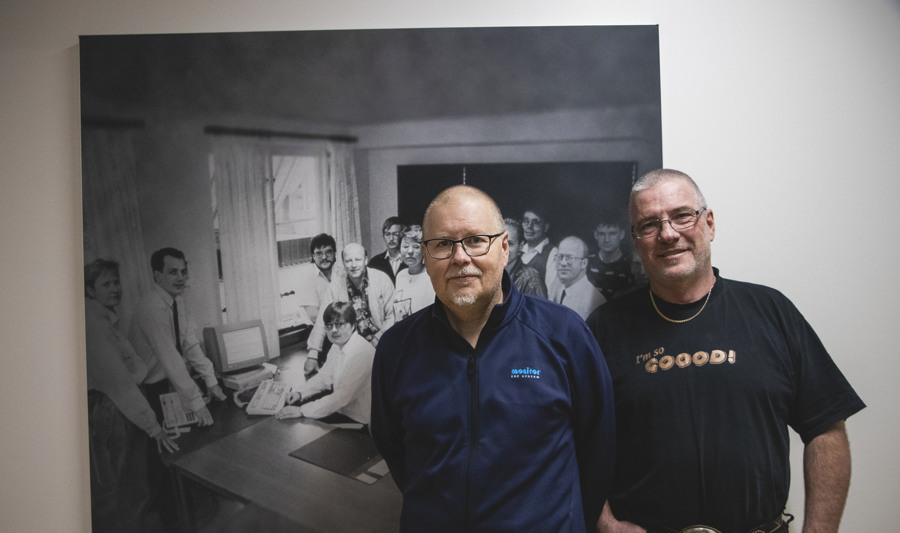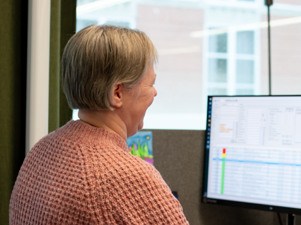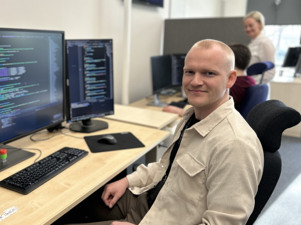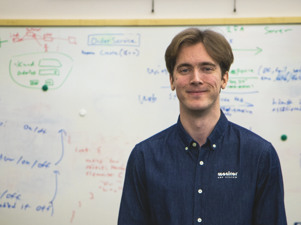Developing in development – a working life with Monitor
Meet Kenneth Jansson and Thomas Bodell, long-time employees at Monitor. Their stories range from busy working nights fueled by free hamburgers to mentoring their young successors in the expansive, global company of today. “I don’t think we'd employ someone now like I was in 1987" laughs Kenneth.
In the 50 years that have passed since Åke Persson started Monitor, the company has never stopped evolving. Monitor's ERP system is now a market leader in Sweden, and the company is focused on global expansion. But perhaps the most exciting era – a transformative time for the whole IT industry – took place during a golden period of the 1980s and 1990s. Everything happened at once. The internet arrived, and so did Windows. Large floppy disks were replaced by smaller hard ones, followed by CDs. Mobile phones still had buttons, and everyone didn't have one – far from it. SVT 1 and 2 were the only TV channels you could watch, and Sweden’s best selling car was the Volvo 740.
Back then, Monitor was a small company with big ideas. And there were only a handful of developers. Today there are 300 people working on Monitor in Sweden. At the time of writing, Monitor employs around 500 people around the world.
Kenneth Jansson and Thomas Bodell are two of Monitor’s most experienced employees. Kenneth started the day after completing national service in 1987; Thomas a couple of years later. At that time, at the end of the 1980s, the roles in the company were far from clearly defined.
“Once day you’d be fixing the coffee machine or shoveling snow, the next you’d be writing code,” recalls Thomas.
Text continues further down, scroll to continue reading.
Listen to a podcast with Kenneth and Thomas!
In this podast you can listen to Kenneth Jansson and Thomas Bodell talk about Monitor in the 1990s. They look back on technical developments over the years and recall some entertaining and interesting anecdotes from an era that feels further back in time than it really is.

Like the good old days!
You can see the nostalgia in both their eyes as they recall the early years, before Monitor had grown into the global company it is today. Kenneth had just graduated from high school, but had still done some programming before being employed as a developer at Monitor. Partly thanks to Åke Persson.
“I was given some documents with code by Ove Sandlund, then a programmer, who asked I could improve it. I must have done something right because they let me take home a computer, an old IBM, over the winter. I completed some tasks and in the spring of 1987 I got the job at Monitor, the day after finishing national service.
Thirty-five years on, Kenneth Jansson still works with development, increasingly in the role of mentor to others. “A bit like a sounding board,” he explains.
Bodell would also end up working in programming, although he’d never done so before starting at Monitor. But a keen interest in technology led him down this route, and since then he’s been involved in developing several generations of the ERP system. These days he’s moved away from programming and works with data conversion for customers who are upgrading to the latest version of the system, Monitor G5.
But you can tell both Thomas and Kenneth both still enjoy the craft.
“The best part of it is problem solving; having a tough nut to crack,” says Kenneth.
“But it’s not just that,” adds Thomas. Solving a task is easy, but it has to work quickly too.”
They explain how there are different ways of solving a problem with programming. But they're not all equally effective, and finding the best solution is something that drives them both.
At the end of the 1980s Monitor was a long way from being the advanced ERP system it is today. However, it was still a revolutionary tool for the customers looking to utilize the new technology.
“As I recall it was the customers who drove development. If a customer wanted something we got right on it – if we thought it would add something – and all the other customers would also benefit,” says Kenneth.
He recalls a customer ringing him in the morning with a suggestion for a change in the system. Shooting from the hip he answered “No problem, it’ll cost you SEK 4,000.” And they whipped up the code right away.
“I defined the customer’s requirements, implemented, tested myself, built the system, packed the diskettes and put them in the letter box.
With a little luck, the customer had their update a couple of days after ordering. Monitor paid close attention to customers’ requests, even if the idea has always been to provide a standard system.
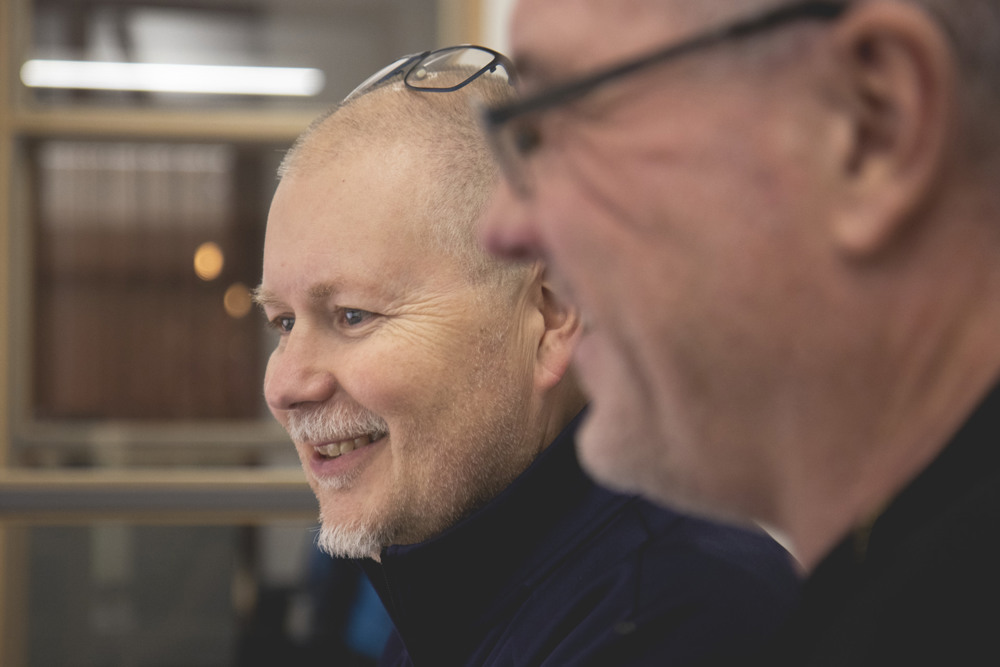
Kenneth and Thomas have had different working tasks down the years. Their experience from many years of development at Monitor is invaluable.
The technology has evolved since 1987. Kenneth Jansson and Thomas Bodell have seen a lot of technological advances. Like when the floppy five-inch diskettes were replaced by smaller more durable versions, which also had space for five-times more data. This came as a relief, since they now needed far more diskettes to send an update of the system to a company.
Then came the internet. However, Monitor had made a head start thanks to something called PC Anywhere. This solution dialed up a modem and remotely controlled the customers’ computers via a fax socket. Thomas remembers some funny stories from that time. Like the time a customer called and was upset someone at Monitor had moved their printer, in the printer room (which was locked), via the fax socket... And only Monitor could gain access to the room.
Or when he tried to explain – in vain – to a customer over the phone how to write a colon on the keyboard. After 40 minutes, he gave up when the customer insisted time after time “it’s a full stop!”
I defined the customer’s requirements, implemented, tested myself, built the system, packed the diskettes and put them in the letter box.
But as the years passed, the customers got more used to the technology. And PCs got cheaper, and more user-friendly.
Then came Microsoft Windows.
Both Kenneth and Thomas agree that moving from DOS to Windows was the biggest and most important technical paradigm shift in Monitor’s history. Switching to the new platform was a critical decision.
“This was at the end of Monitor’s third generation, you could say. Microsoft had released Windows and our customers wanted to work in it. Our competitors could, but not us. We’d reached a crossroads, which was business critical. We were forced to make sure it worked,” says Kenneth.
And Windows would give Monitor its big breakthrough. From half a Manufacturing module and some stock management in the first generation, Purchase was added in the second generation, G2. Version G3 saw the Accounting and Workshop info (Time Recording) modules added. And with the new Windows-based generation four, the system began to take the form we recognize as today's Monitor ERP system. Even if we've “put lipstick on the pig” a few times over the years, as Kenneth and Thomas put it!
Has Monitor been at the cutting edge of technological development?
“Yes, we certainly were then,” Thomas answers, referring to the transition from text-based DOS to the graphical Windows platform. Things we’re on a knife-edge. It was triumph or disaster. It was basically trial and error the whole time.”
Kenneth agrees:
“I read a lot in the evenings and did testing myself. But today there is so much software, and we use so many different types, so it's no longer as easy to be at the cutting edge,” he adds.
Like every other tech company, Monitor has been forced to make a lot of choices over the years. One of the most important was the decision to go ahead with PCs, despite other options being available. Like “AS/400” and Macintosh, among others. Many of Monitor’s competitors focused on the larger, but far more expensive so-called “mini computers”. But Åke Persson realized they were too expensive for most customers. The PC was the most popular, easily accessible choice.
Åke's intuition for market demands has undoubtedly guided Monitor in the right direction down the years. But he also had some, let’s say, more innovative ideas. Thomas takes up the story.
“He'd done a deal with Burgmans hamburgers here in Hudiksvall. They got a couple of computers in exchange for Monitor receiving free hamburgers. So we’d go there and pick up food in the evenings. We were pretty sick of Bergmans burgers in the end!”
“I think I put on about 10 kilos,” smiles Kenneth.
“That’s just the half of it” replies Thomas with a giggle.
Having been here all these years, can you see a common theme throughout the company's history that’s brought us to this point?
“We've been really adaptable and flexible. And we've normally gone with the popular option. We chose the PC, DOS and Novell. Then there was Microsoft Windows. It was far from certain back then that this would become so widespread,” says Kenneth.
“Another key factor is the amazing commitment of the people who work here. We've been like a family. This has definitely been a reason for our success,” Thomas adds.
What can a developer expect from Monitor today?
“There’s every opportunity to develop here today; at least, if you’re curious and want to learn,” Thomas explains. “The development taking place here is pretty high-tech. A lot of what we do involves advanced technology. As programmers, we don’t draw pictures on the screen but have a framework which builds the picture based on code. A motor that generates a screenshot.”
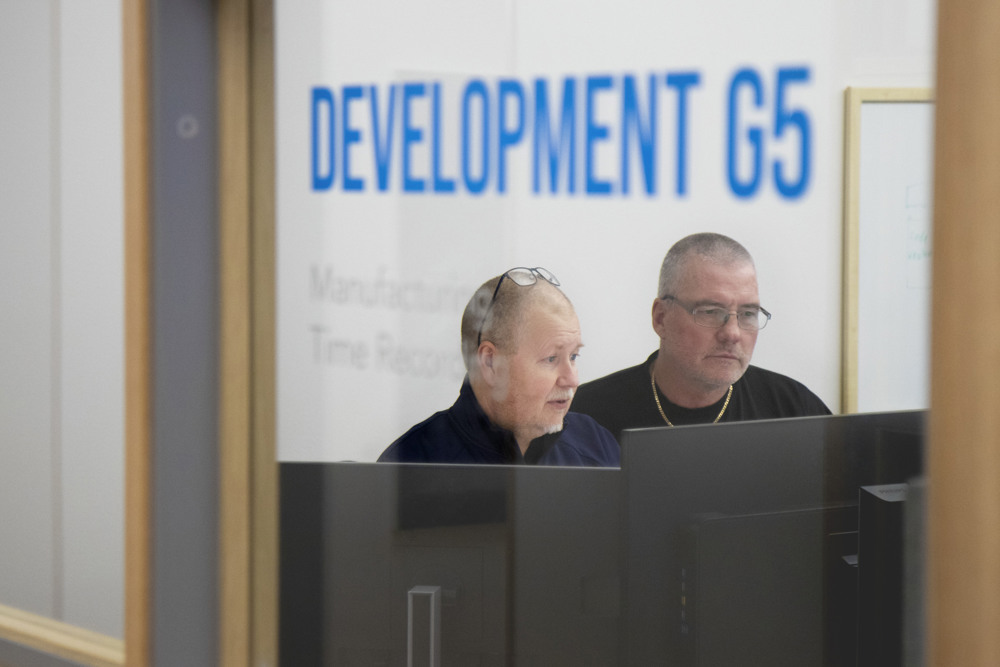
Kenneth works at G5 Development, primarily as a mentor for young programmers starting to develop the ERP system.
Is it more difficult to be a developer today?
“Yes, the demands are greater. I don’t think we’d employ someone like I was in 1987,” says Kenneth.
“No, and definitely not someone like me,” adds Thomas with a laugh.
They both say there's a much greater need for education today “so you know what you're doing”. But it’s important not to shut the door on those who are self-taught. Not knowing what can't be done has its own charm. Kenneth explains:
“Sometimes a qualified programmer will say something can't be done; but we can’t say for sure. So we solve it anyway.”
The labor market in the 1990s was similar to today’s for people looking to work with programming and software development. Thomas says he could well have earned a higher salary if he’d moved to Stockholm, but he liked the security of working in Hudiksvall.
What’s made you stay at the company so long?
“I normally say ‘I haven't been here so long’; I have a new job every 10 years with new requirements,” says Kenneth.
Does it feel like your life's work?
“A little. It’s been a fun and interesting journey through the years,” Thomas says. We must have done a few things right at least,” he adds, modestly.

